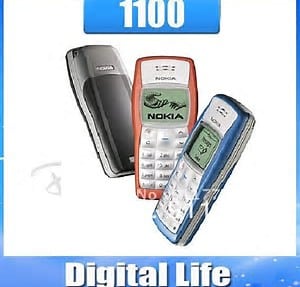“Without playing with fantasy no creative work has ever yet come to birth. The debt we owe to the play of imagination is incalculable.” Carl Jung
In 1907, the most iconic caricaturist Lewis Baumer published a cartoon, displaying a man and a woman dating on wireless telephone like equipment. Similarly, in early 20th century; artist Karl Arnold released a cartoon depicting a device, a closer replica of a mobile phone. A children’s book stunned the audience in 1931 when it portrayed a man pulling a phone from his pocket and talking to someone. These are some astonishing creative marvels which predicted shaping the future of communication way ahead of times
The era of Invention:
If on one side some creative genius like Lewis Baumer and Karl Arnold were creating the future vision of communication devices on the other side a set of genius scientists like Graham Bell, Thomas Edison, Antonio Meucci or Tivadar Puskas were working on making that vision a reality.
Inception of Mobile Revolution
During the Second World War, the usage of handheld radio transceivers became so popular that the mobile telephones became available by some companies in 1940. The early devices were not sophisticated.
In 1946, AT&T introduced Mobile Telephone Service to one hundred towns and highway corridors. During that time calls were set up manually by an operator and the user had to depress a button on the handset to talk and release the button to listen within a limited coverage area serviced by one base station throughout the phone call.
Breakthrough in Mobile Technology
The major breakthrough happened in 1979 when the first automatic IG Analogue was introduced in Tokyo which was soon deployed in North America, Australia, and Israel. It was a pioneering technology but had several serious issues by modern standards.
The introduction of Smart Phones:
In the 1990s, the ‘second generation’ mobile phone systems emerged. The rise in mobile phone usage as a result of 2G was explosive and this era also saw the rise of prepaid mobile phones. In 1993, possibly the world’s first Smartphone was introduced. It was a mobile phone, pager, fax machine, and PDA all rolled into one including a calendar, address book, clock, calculator, notepad, email and a touch screen. The 2G technology had reached a saturation point, so the industry began to work on the next generation of 3 G technologies. Consequently, the industry began looking to data-optimized 4th-generation technologies, with speed improvement.
Nokia’s 1100 becoming a rage
In the atmosphere of technological progress, a mobile device like Nokia 1100 achieved quite a lot of popularity in 2003. It became quite popular in the developing nation due to its basic features of making calls, SMS, alarm clock and reminder. When Apple launched iPhone 4 it was a marked change in appearance and technology. It had multitasking features but had a limitation which was modified in iPhone 5 which was lighter in weight and a bigger screen with a low battery life.
Apple climbing the ladder of Success
In 2014 Apple launched iPhone 6 which had a crisp screen, improved wireless speed, good camera autofocus quality, storage capacity up to 128 GB at the top end. But the battery life was still wasn’t better but overall the phone bagged good reviews on performance, features, and design. In 2016, with a big bang, Apple announced iPhone 7 with black, jet black and red color. iPhone 7 looks gorgeous, has improved storage capacity with water resistance.
Possibilities Unlimited for Internet Calls
According to the Ericsson’s Mobility report today there are 2.6 billion Smartphone users globally which will actually number 9.2 billion in 2020. With the increasing number of smartphone users, the possibility of internet calls overtaking the voice calls is rapidly increasing.
A well-known consulting firm has pointed out in one of the reports that “Smartphone’s which initially emerged as a means of marrying voice and data services, the latter is quickly overtaking the former in terms of usage, especially now that mobile connectivity has become much quicker, thanks to the wider availability of 4G. Whether phone calls will die out completely is still uncertain, but for business users, the breadth of communications opportunities that are available has never been greater than it is at the start of 2016”

